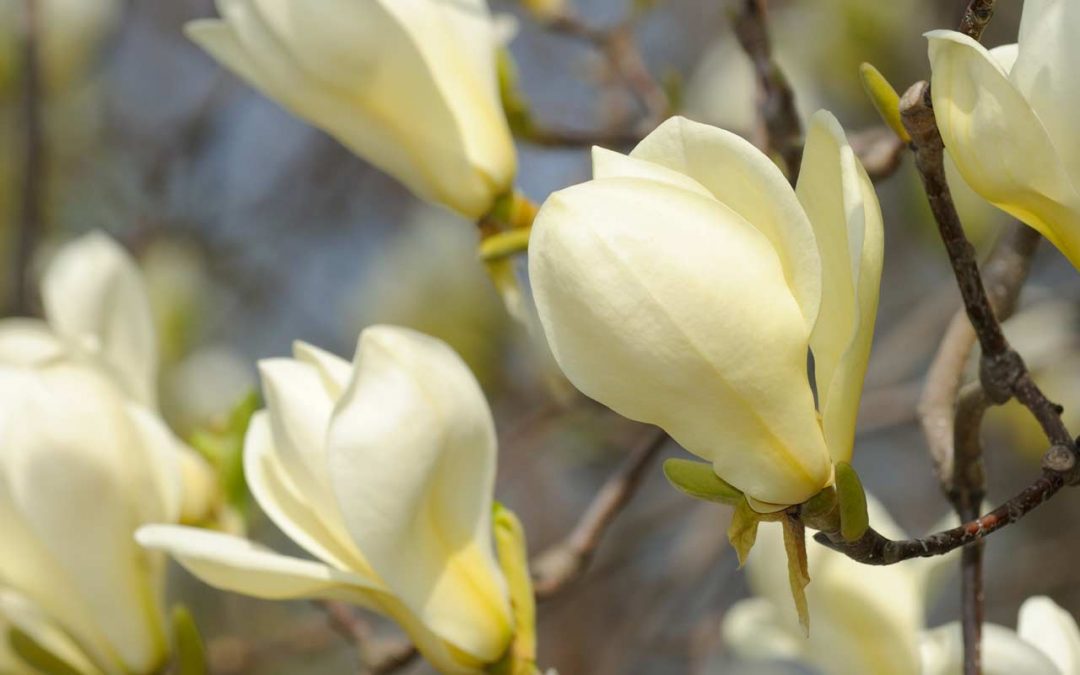About Heronswood Magnolias
Showy fragrant flowers with thick, substance-rich "tepals" make the Magnolia a choice small tree for any landscape where the soil is better than average and moisture-retentive. Heronswood offers the choicest: Magnolia sieboldii with its gentle nodding white egg-shaped buds opening in late spring into shallow-cupped fragrant flowers that reveal a center of bright crimson, on a tastefully small, shrub-like tree ideal for smaller spaces; M. wilsonii bears similar but more "relaxed" flowers with darker crimson centers, and is more tree-like in form. M. macrophylla is bold and arresting with its massive leaves that lend a tropical look and pie-plate-size white flowers; M. ‘Sunsation’ is a recent hybrid that blends an unlikely combination of colors for a magnolia flower – yellow and pink – on a medium size tree.
Where should I plant my Magnolia?
Magnolias thrive in partially shaded sites in moist, well-drained soils that are rich in organic matter. Although most magnolias are native to woodland understory sites, if the soil is heavier and retains sufficient moisture, full sun will suffice. Best is a location protected from the strongest winds; M. macrophylla especially should be planted so its large foliage is not frequently shredded by high winds.
How do I plant my Magnolia?
Keep rootball moist (but not soaking wet) until planting. If you are unable to plant soon, keep the plant outdoors in a sheltered, shaded location away from direct sun and wind. At planting, dig a hole only as deep as the rootball, but at least as wide as twice the diameter of the rootball (the wider the hole, the better!). Add humus (compost, peat moss, etc.) to the soil removed from the planting hole before backfilling. Loosen the roots of your magnolia – don’t be afraid to cut the outer roots to break them free before backfilling so that they have good contact with the soil. Make sure to keep the plant high enough when backfilling so that the finished soil surface is even with the top of the original rootball. Remember: digging and planting too deeply is one of the most common factors contributing to the loss of newly planted shrubs.
Water-in well to soak the soil and encourage soil contact with the roots. When rainfall is scarce (or less than one inch per week), water weekly for the first year after planting. Watering will necessarily be more critical the first few weeks after planting, especially if dry, sunny, and hot weather follows. A one to two inch layer of coarse mulch over the root zone will help maintain soil moisture.
What should I do in order to have my Magnolia increase in beauty from year to year?
Once established, trees planted in the lawn should be kept free of turfgrass competition by use of a broad ring of mulch or less competitive groundcover over the root zone. Mulches should be no deeper than 2 inches deep and placed so that it does not touch the trunk. Periodic deep watering may be necessary during periods of extreme drought. Pruning should be limited to removing competing, rubbing branches and deadwood.

